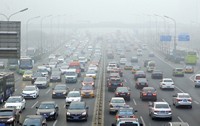Advertisement
Grab your lab coat. Let's get started
Welcome!
Welcome!
Create an account below to get 6 C&EN articles per month, receive newsletters and more - all free.
It seems this is your first time logging in online. Please enter the following information to continue.
As an ACS member you automatically get access to this site. All we need is few more details to create your reading experience.
Not you? Sign in with a different account.
Not you? Sign in with a different account.
ERROR 1
ERROR 1
ERROR 2
ERROR 2
ERROR 2
ERROR 2
ERROR 2
Password and Confirm password must match.
If you have an ACS member number, please enter it here so we can link this account to your membership. (optional)
ERROR 2
ACS values your privacy. By submitting your information, you are gaining access to C&EN and subscribing to our weekly newsletter. We use the information you provide to make your reading experience better, and we will never sell your data to third party members.
Atmospheric Chemistry
Wildfires are stifling air-quality improvements in the western US
Researchers tie the persistance of particulate emissions to the region’s worsening wildfire seasons
by Katherine Bourzac
February 17, 2019
| A version of this story appeared in
Volume 97, Issue 7

Thanks to regulations targeting power plants and motor vehicles, human-caused emissions of particulate matter have been declining in many areas of the US. These regulations usually target aerosols less than 2.5 µm in diameter, called PM2.5, which can travel through the lungs and into the bloodstream, increasing the risk of respiratory and cardiovascular diseases. But in the western US, summer levels of PM2.5 have been holding steady—and some years, they’ve increased. Researchers expected the national regulations to lead to improvements in all parts of the country, says Katelyn O’Dell, a graduate student in atmospheric chemistry at Colorado State University. Now she and her colleagues, including group leader Jeffrey Pierce, have tied the persistence of PM2.5 to western wildfires (Environ. Sci. Technol. 2019, DOI: 10.1021/acs.est.8b05430). The scientists focused on the Pacific Northwest, where the PM2.5 trend is particularly stark. The team used a combination of atmospheric modeling, air-quality data, and satellite observations of wildfire smoke to make the connection. Wildfire season has been getting longer and more intense in the West, a trend that could intensify due to climate change. O’Dell says researchers need to study the long-term public health effects of wildfire PM2.5 and determine if they are similar to those caused by human-made PM2.5.




Join the conversation
Contact the reporter
Submit a Letter to the Editor for publication
Engage with us on Twitter